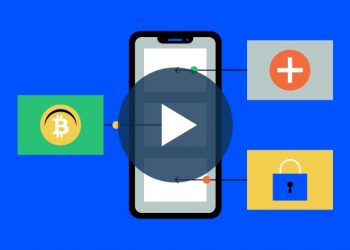Wireframes are essential to the success of any project, and the design of mobile applications is no exception. Between quick, low-fidelity sketches and complex, first-generation interactive prototypes lies the territory occupied by wireframes. The process of wireframing for mobile can look very different from one project to the next.
The process of wireframing and its subsequent translation into hi-fi design is approached in various ways by various designers. Even though some businesses promote moving on to the coding phase immediately after the sketching phase, the typical design process consists of the following steps: Sketch (level of the conceptual) > Wireframe (level of the component) > Mock/Prototype (level of the styles) > Code (level of the interactions).
Wireframing is not supposed to be the first step in designing a product because it is essential to remember that product design is a multi-step process. It is imperative to spend sufficient time conducting user research before creating wireframes. During the process of wireframing, both qualitative and quantitative research data will serve as references.
Table of Contents
The Process of Wireframing a Mobile App and Its Steps
Develop A Target User Flow Diagram
Before beginning wireframing, you need to have a distinct idea of the number of screens you’ll need to design and how users will interact with each of those screens. Gaining this understanding will be much simpler when you have a tangible user flow.
A user flow is a sequence of steps a user goes through to accomplish a particular objective. The user’s end objective is a fundamental component of the user flow. A user may pursue several avenues before arriving at their desired destination; this is one reason user flows are not always linear.
User flows will greatly assist you in determining which wireframes you will need to develop and how they ought to be connected.
It is possible to get a mental picture of the flow using simple objects like boxes and arrows. User flows can be designed using either paper or a digital tool, whichever is more convenient. Using Balsamiq, the following is an example of a user flow for a mobile app that specializes in the delivery of food:
Create A Rough Outline of The Most Important Part of the User Flow
Following the step of defining the user flow, the next step is to visualize it. It is best to avoid giving in to the temptation of using a digital prototyping tool for this purpose, even though doing so might be appealing. At this stage, the objective is to let your creativity run wild and investigate various design avenues. For that purpose, sketching on paper is often more effective than using a digital tool.
Using sketches, you can generate ideas rapidly, which you can show to other people, receive feedback, and improve upon. When sketching, you should always consider the user’s perspective and consider the end goal that the user is trying to achieve. People who download a mobile app that delivers food intend to obtain delicious food as quickly as possible. And to find the best mobile app development services provider for every screen that you design, ask yourself:
- For what purpose is this page being displayed?
- How does this page assist a user or a company in accomplishing its goal(s)?
Wireframing
The sketches you make will serve as the basis for the wireframes you create. When it comes to wireframing, you should aim to create wireframes of a mid-fidelity level. Discussions with the other designers and developers are greatly aided by using wireframes with a medium level of detail.
Set A Mobile Frame
It is possible to use a plain rectangle as a frame for your mobile design; however, it is strongly recommended that you choose a frame with the dimensions of the device you are designing for. To begin, the frame will serve as a natural constraint, preventing you from placing an excessive number of components on the screen. Second, using a frame will give the impression that a design is present.
In most cases, you will be required to design for a variety of different types of devices. It is recommended that you begin with the device with a screen size in the middle. For example, if you were developing a mobile app for iOS in 2019, you can use a frame designed for the iPhone XS.
Figure Out the Layout Using Boxes
During the early stages of wireframing, your primary objective should be to establish a distinct visual hierarchy, complete with a layout and a structure. Rather than concentrating on the content, you should consider how it is presented. Begin by drawing boxes on the canvas after determining how you want the user to process the information and plan the layout accordingly.
Place a significant emphasis on the sequence in which you intend to present the information to your users. It is important to remember that people scan web pages and the screens of their phones from left to right and top to bottom (F-shaped pattern works both for desktop and mobile screens).
The following screenshot is an example of a wireframe for the home screen of our mobile app. Please note that we have established the hierarchy of elements by basing it on the sizes of the objects.
Use Design Patterns
A good user experience (UX) design will have familiarity as one of its most important characteristics. When people see familiar user interface elements in a new product, they can rely on the experience they have had with similar products in the past when using this product. There are native design patterns built into Android and iOS, making it easier for designers to create a user interface that feels familiar to users. Design patterns serve as reusable building blocks for content, and applying them to resolve recurring issues (such as global navigation) is possible.
The top-level mobile navigation patterns that are most frequently are the bottom tab bar, the side drawer, and the Floating Action Button (FAB). Use one of these patterns for mobile app development for your business if you want to design navigation paths that are easy to understand and straightforward.
Bring In an Actual Copy
When you are satisfied with the visual hierarchy you have created, you can then begin replacing the placeholders and dummy text with actual content (actual copy or the one relevant to the user). Because Lorem Ipsum does not communicate how the page assists users in achieving their goals, we should steer clear of dummy text at this stage for a very important reason. In addition, most of the visual elements we design are predicated on the content that is included in our products. When you begin adding real content, you will notice that your product does not require all of the UI elements (or sections) you initially planned to include.
When you add real details to your wireframes, you may find that the current layout is not functioning as well as it should. In this particular scenario, it is essential to iterate until a more accurate representation of the information you attempt to convey can be discovered.
After adding all the actual copies to the page, you should check to see if it flows well for the user. Some of the content on your page may be out of order. This is the ideal time to improve the composition of the page and reorganize the content currently displayed on it.
Ensure Your Content Scales Well
Even if your design looks fantastic on the screen of a medium-sized smartphone like the iPhone XS, this does not guarantee that those using an iPhone 5 or an iPhone XS Max will have the same enjoyable experience. When you’re wireframing, it’s perfectly acceptable, to begin with, to have a screen in the middle of the available sizes. However, it’s critical to check out how the content appears on various screen sizes, including those that are smaller and larger, and make adjustments to it as necessary.
Create A Flow by Connecting the Pages Together
It is possible to ship your design as a collection of individual screens; however, it is recommended that you create a flow out of these screens instead. UX flows simplify the process by which a team can understand the specifics of various interaction scenarios. They also convey to users how they are expected to interact with a product.
The use of UX flows will also prompt you to consider the functionality of the mobile app in its entirety. For instance, after visualizing the UX flow, you might conclude that you need to include an additional state between the home screen and a page that displays search results. This could be the case (because the backend of your system will take a few seconds to return the results).
A reference number should be assigned to each screen, which is another smart idea. When discussing the project with other team members or stakeholders, having reference numbers at your disposal will make your life much simpler.
Test your design decisions
Testing is the final step in the wireframing process and is also one of the most important steps. Testing requires user interaction, which is why you’ll frequently hear this term discussed concerning prototypes. However, it is possible to carry out straightforward testing for a flow constructed using wireframes. Putting together wireframes in Balsamiq makes it possible to create simple prototypes that can be interacted with using clickable links. The purpose of such testing is to determine whether or not all of the screens are compatible with one another.
Conclusion
The overarching purpose of wireframing is to map out the structure of the content and establish a firm basis for the subsequent stages of the design process. Wireframes that have been thoughtfully crafted make the visual and interaction design processes much simpler.
To find your own unique approach to wireframing, you should devote sufficient time to experimenting with various tools and procedures as with any other aspect of the design process. The best way to improve is to practice.
Follow Techia for more!














